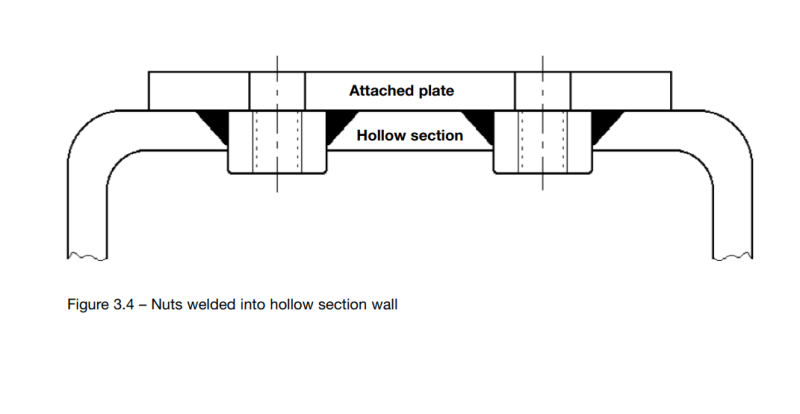Givemeamoment
Structural
- Dec 19, 2020
- 17
Hello,
Where can I find design examples or guidance of how to through-bolt an HSS member from the underside to the plate above with a nut? Or blind bolts? And where can I find information for bolts less then 5/8" since it's not given in AISC? I've never designed for an overhead application. I'm designing a hanging architectural frame where I'm checking if a pan head through bolt with a nut (or blind bolt) would be feasible (it's preferred to not see any bolt hex heads from the bottom and everything be flush). Any guidance is much appreciated, thank you!
Where can I find design examples or guidance of how to through-bolt an HSS member from the underside to the plate above with a nut? Or blind bolts? And where can I find information for bolts less then 5/8" since it's not given in AISC? I've never designed for an overhead application. I'm designing a hanging architectural frame where I'm checking if a pan head through bolt with a nut (or blind bolt) would be feasible (it's preferred to not see any bolt hex heads from the bottom and everything be flush). Any guidance is much appreciated, thank you!

